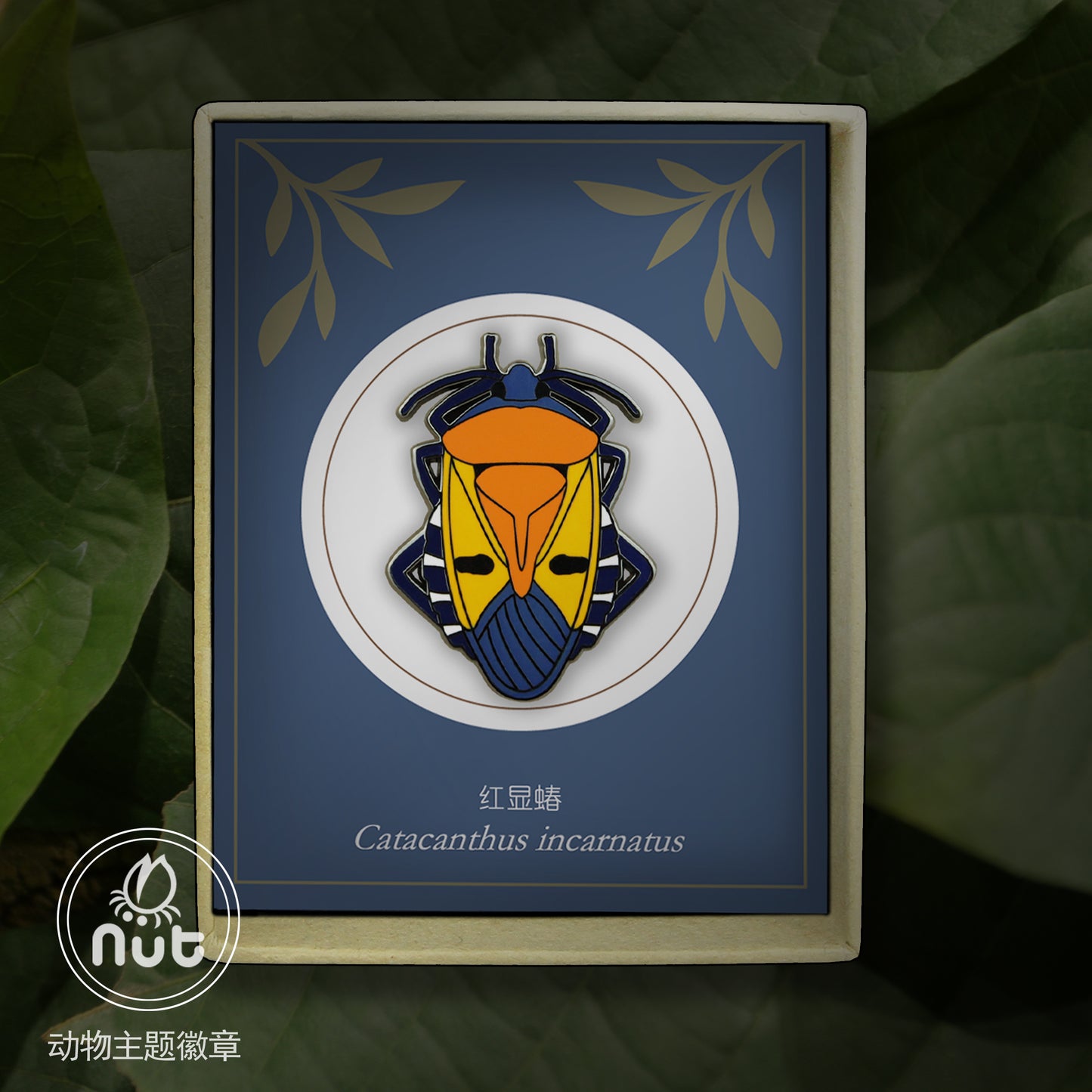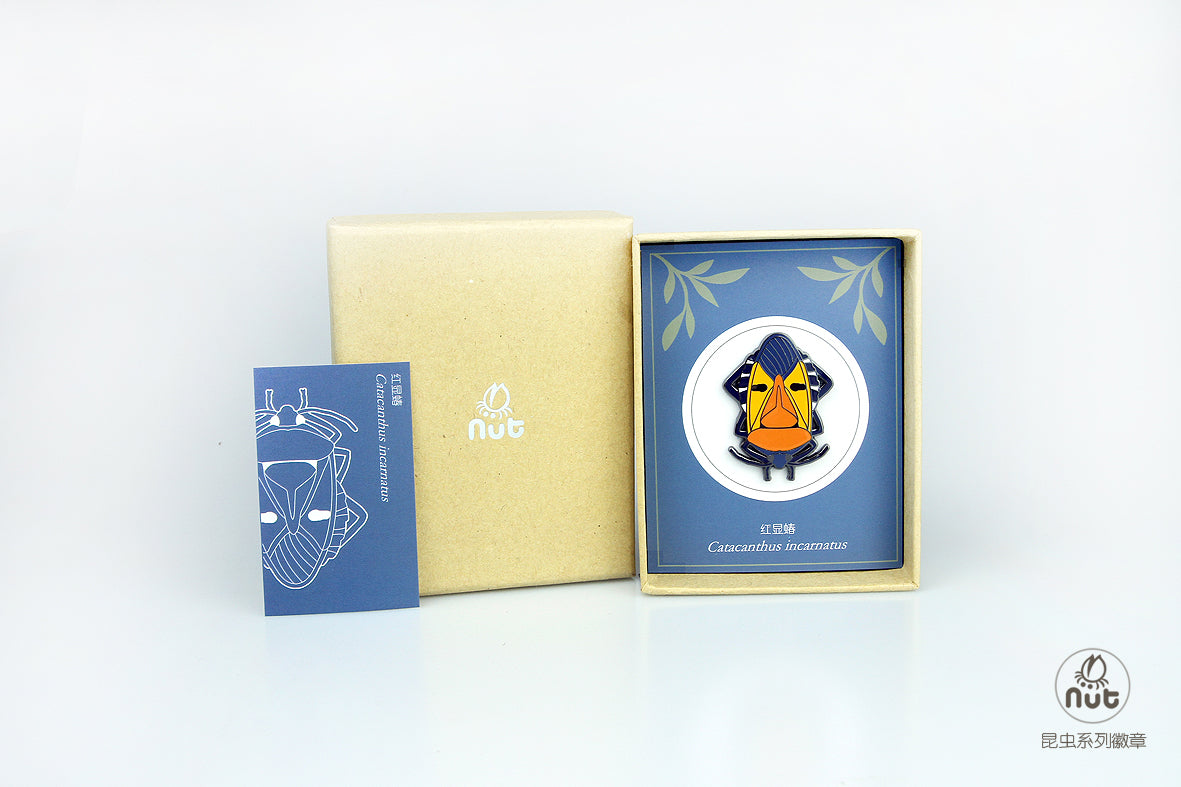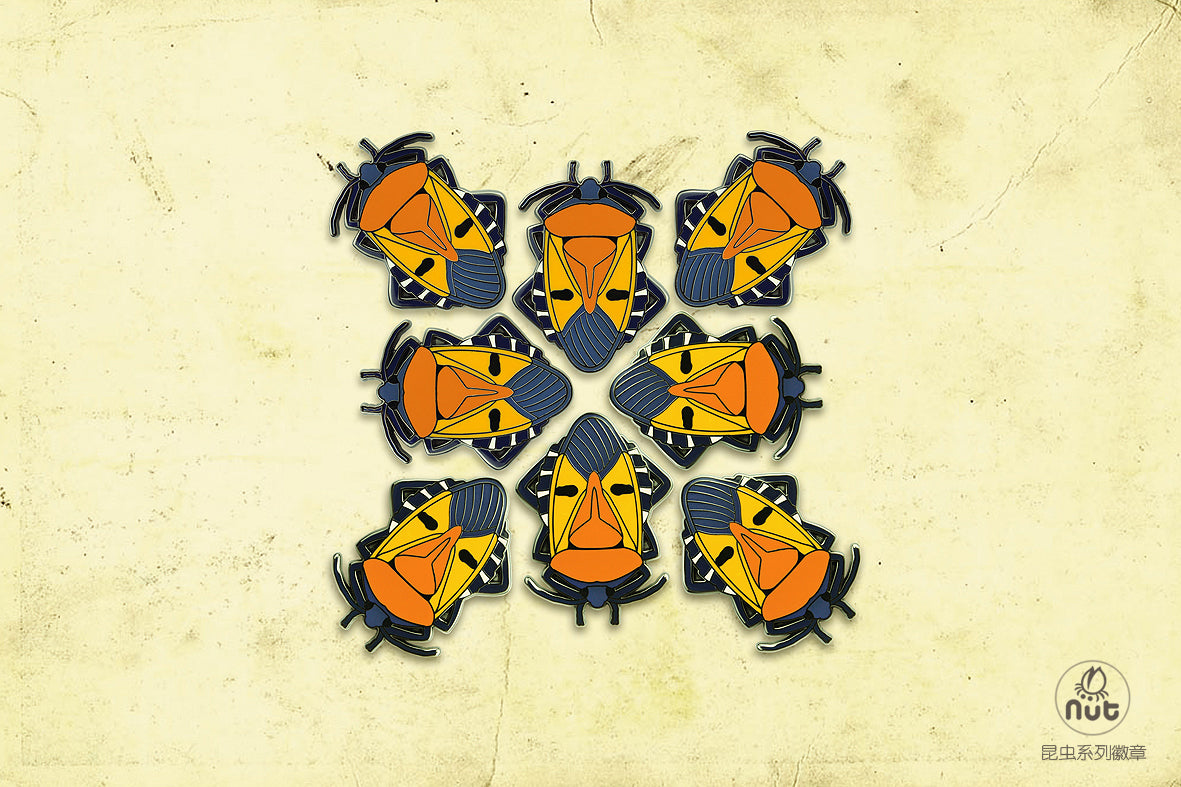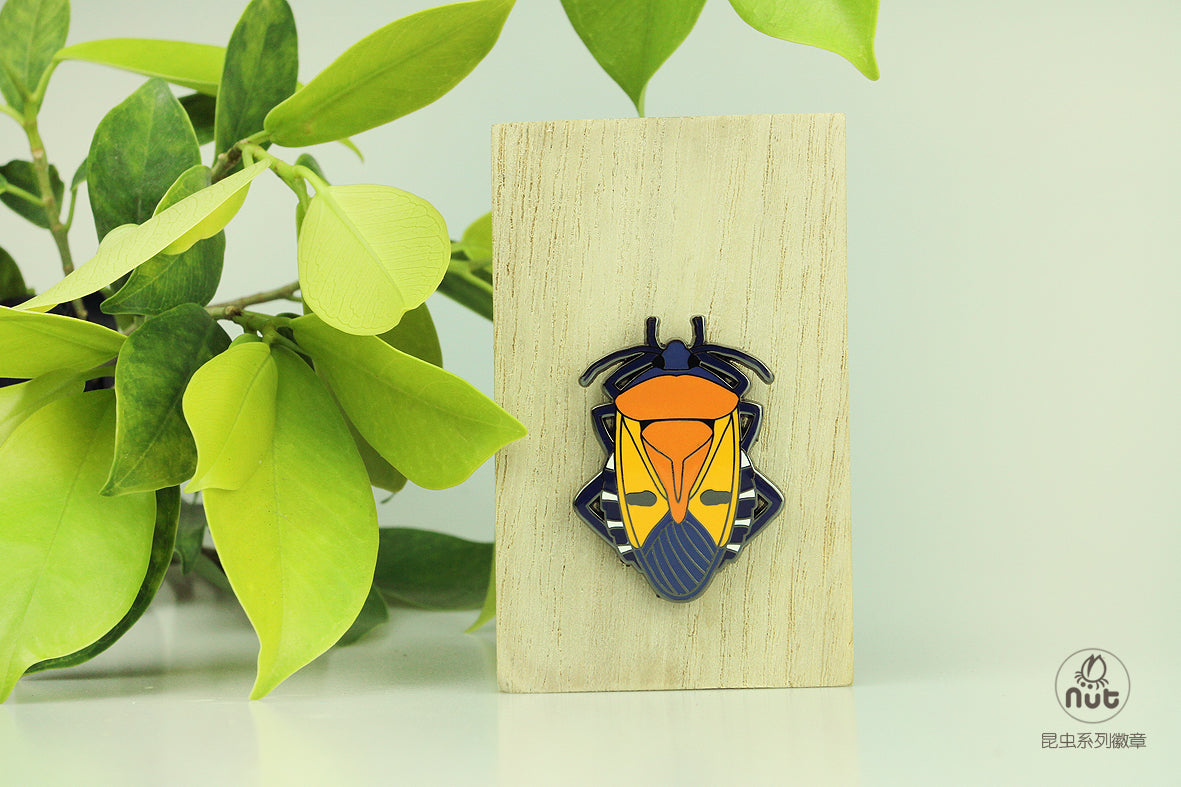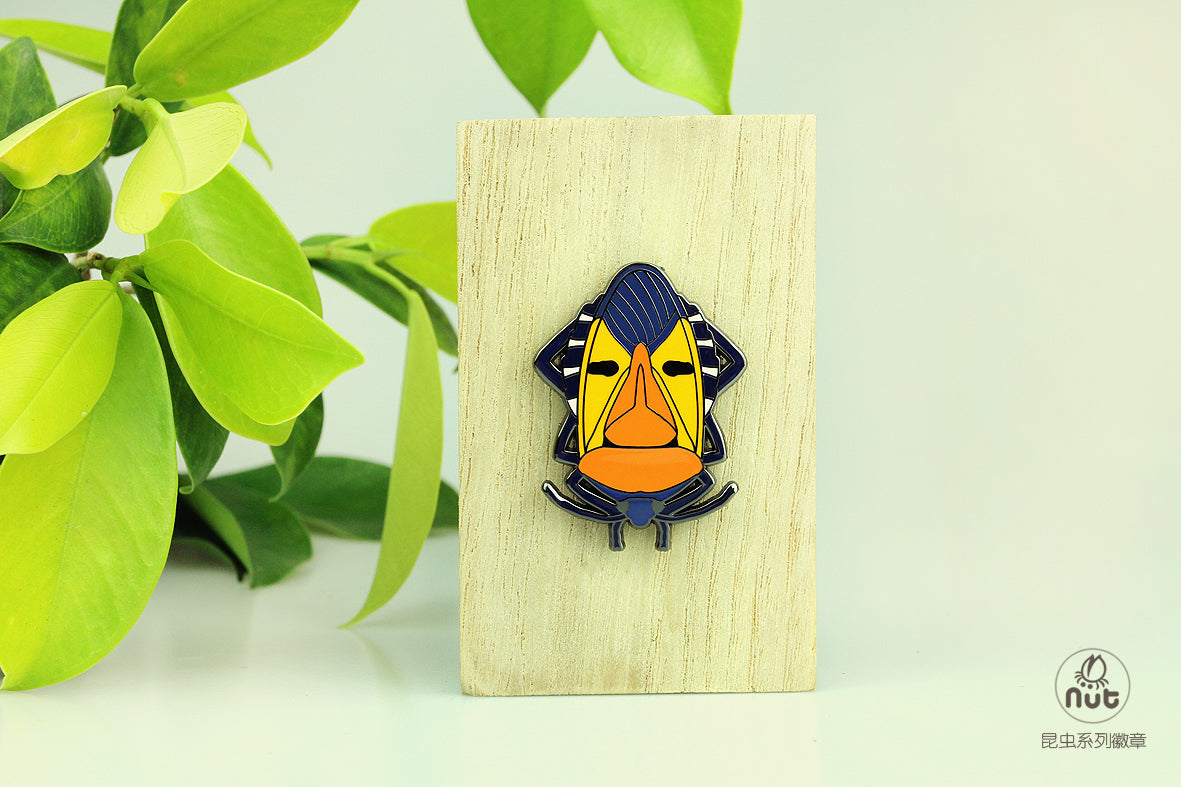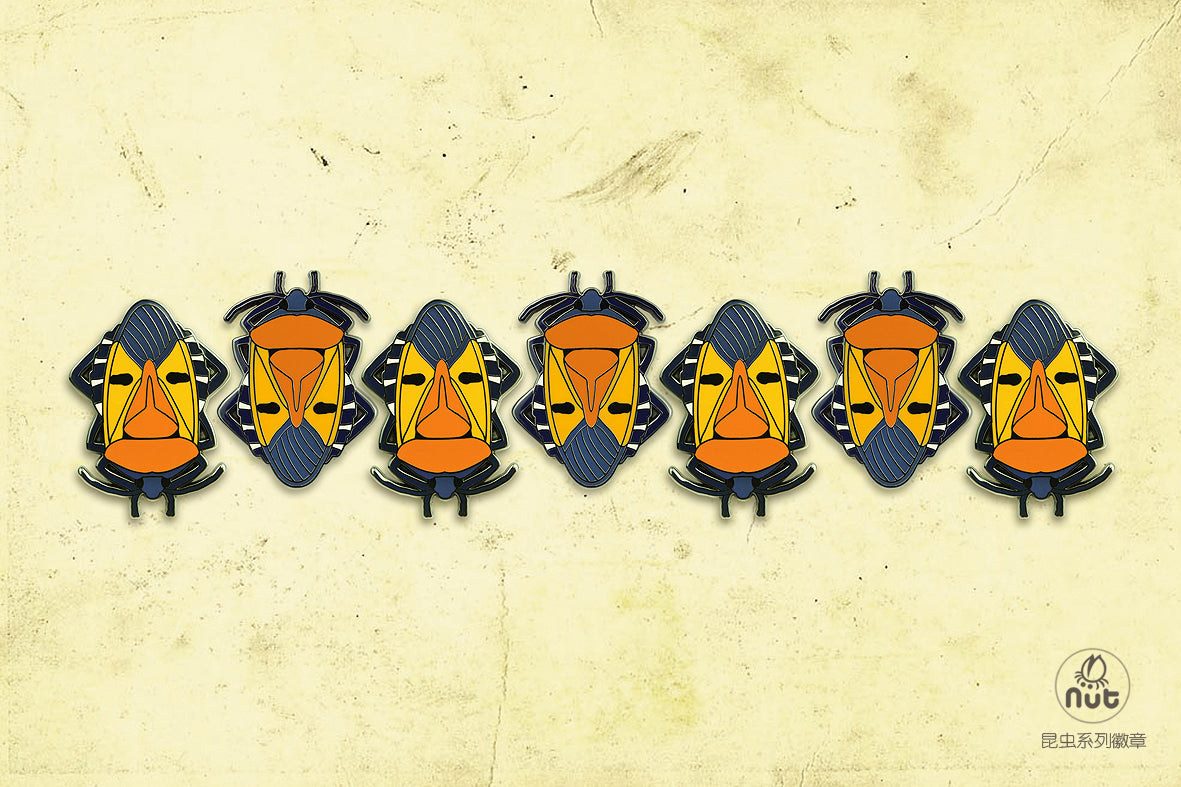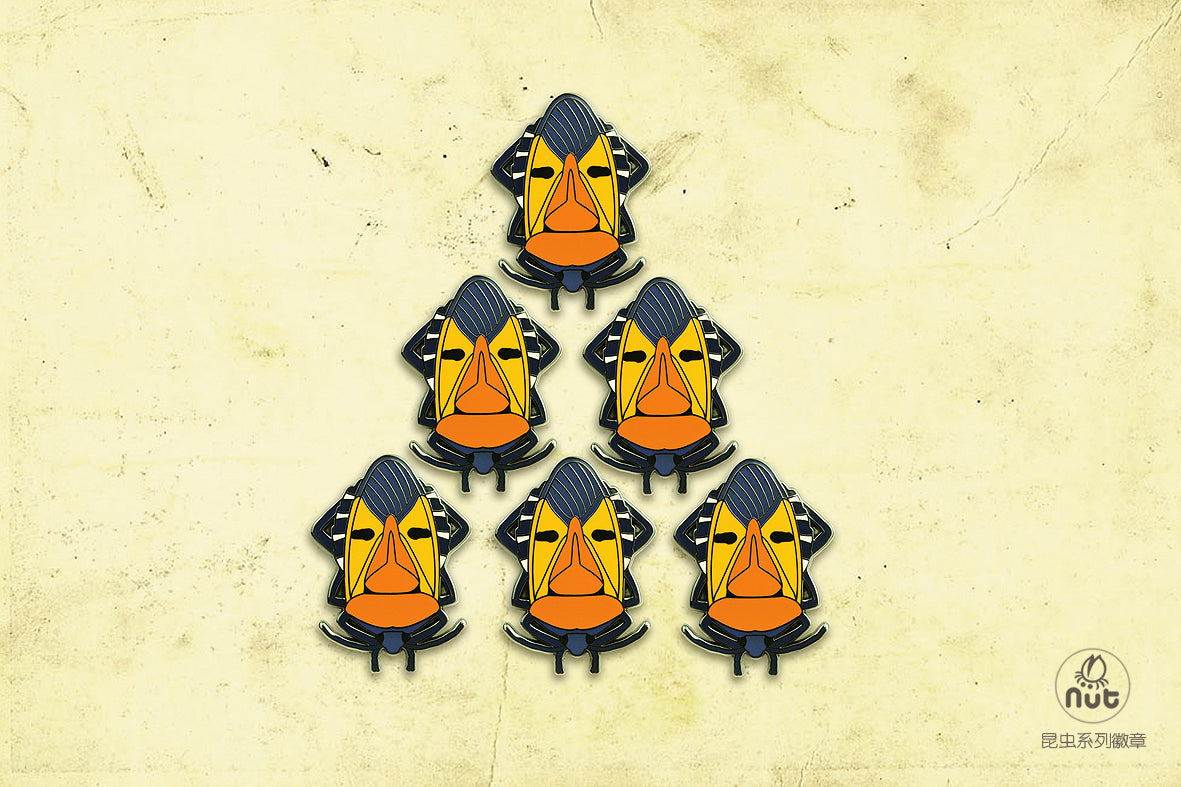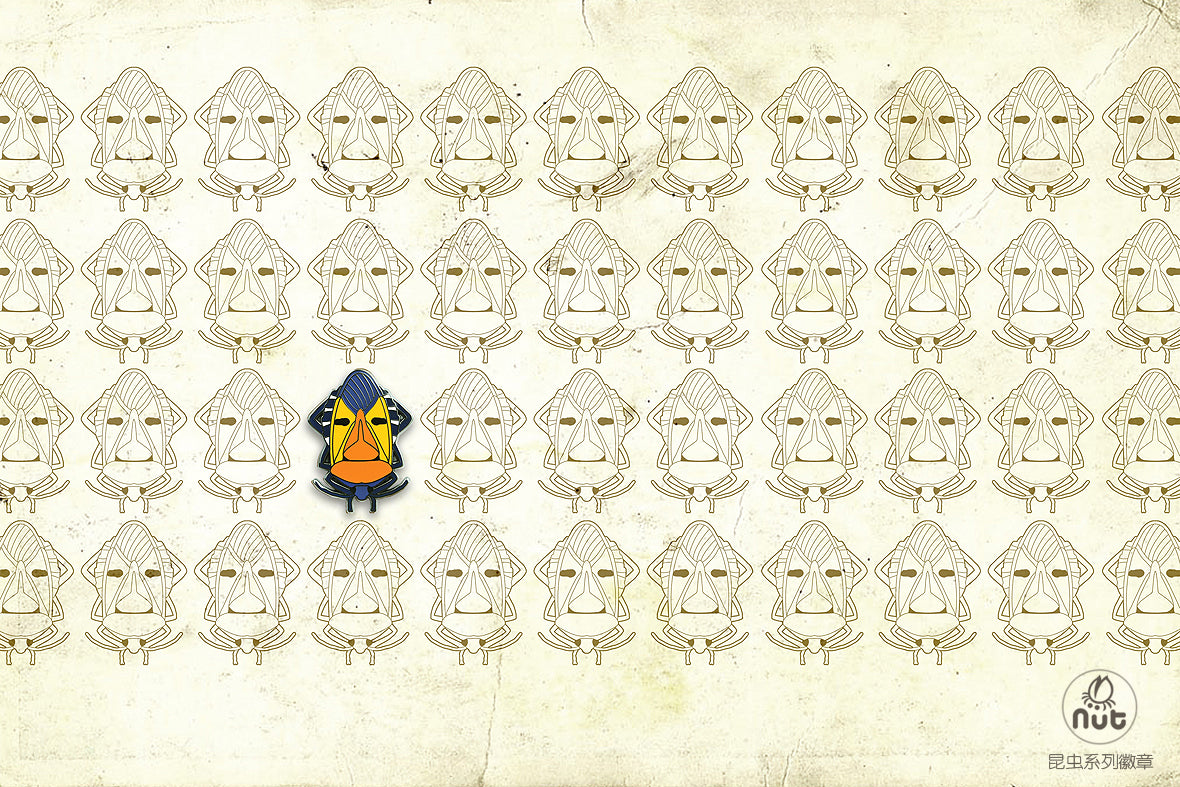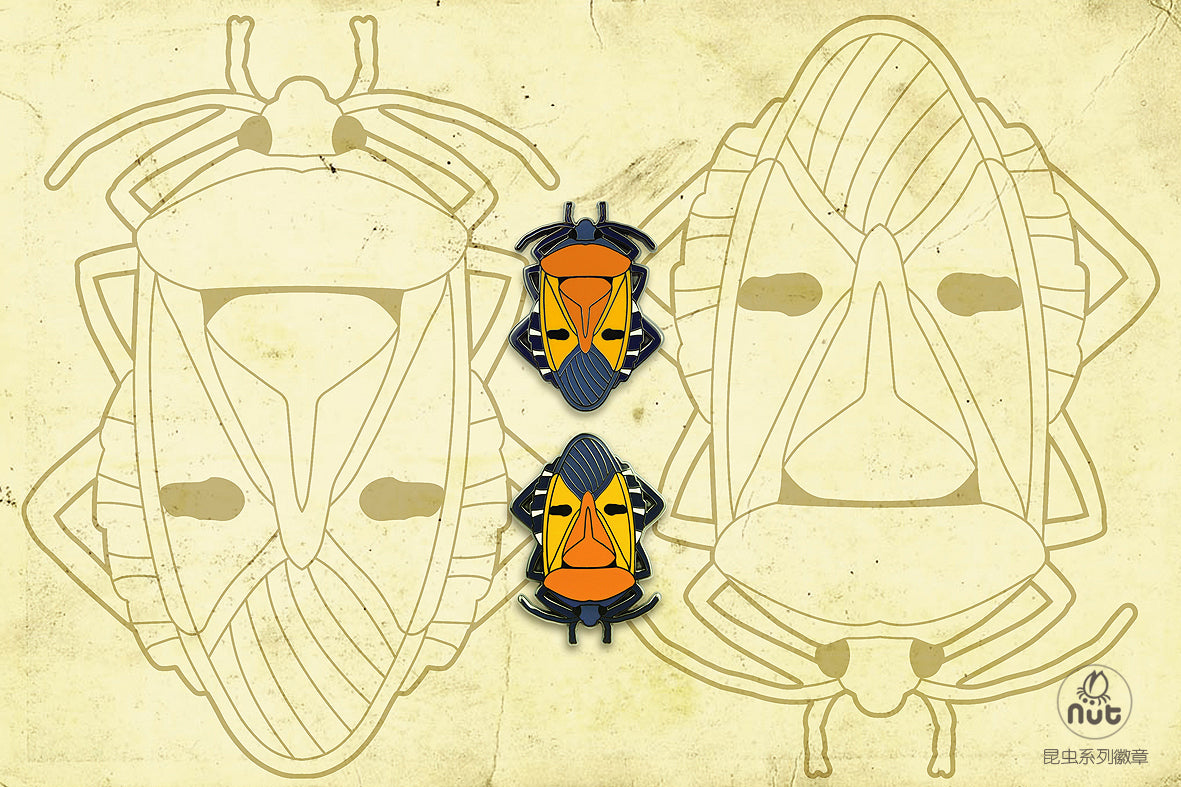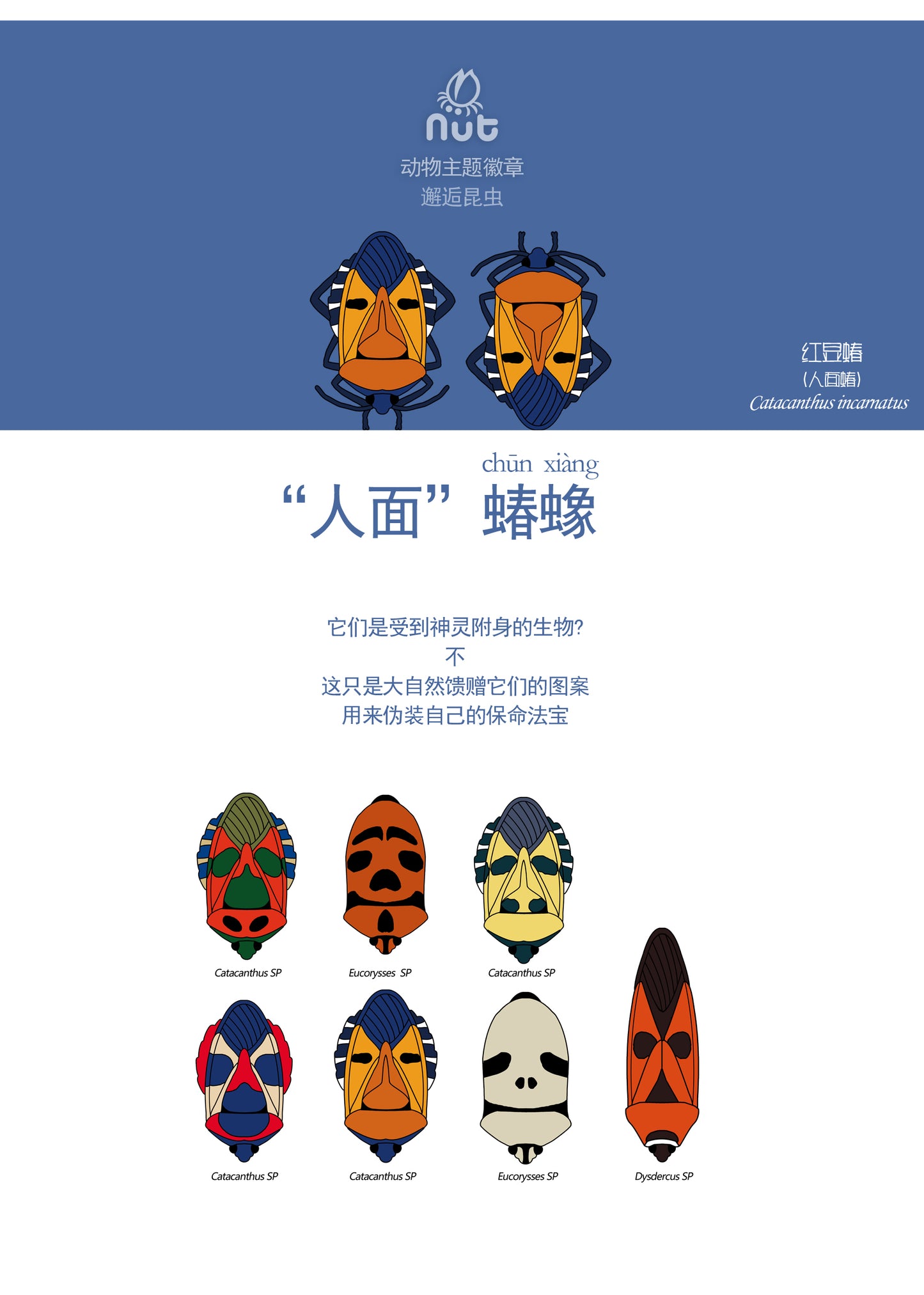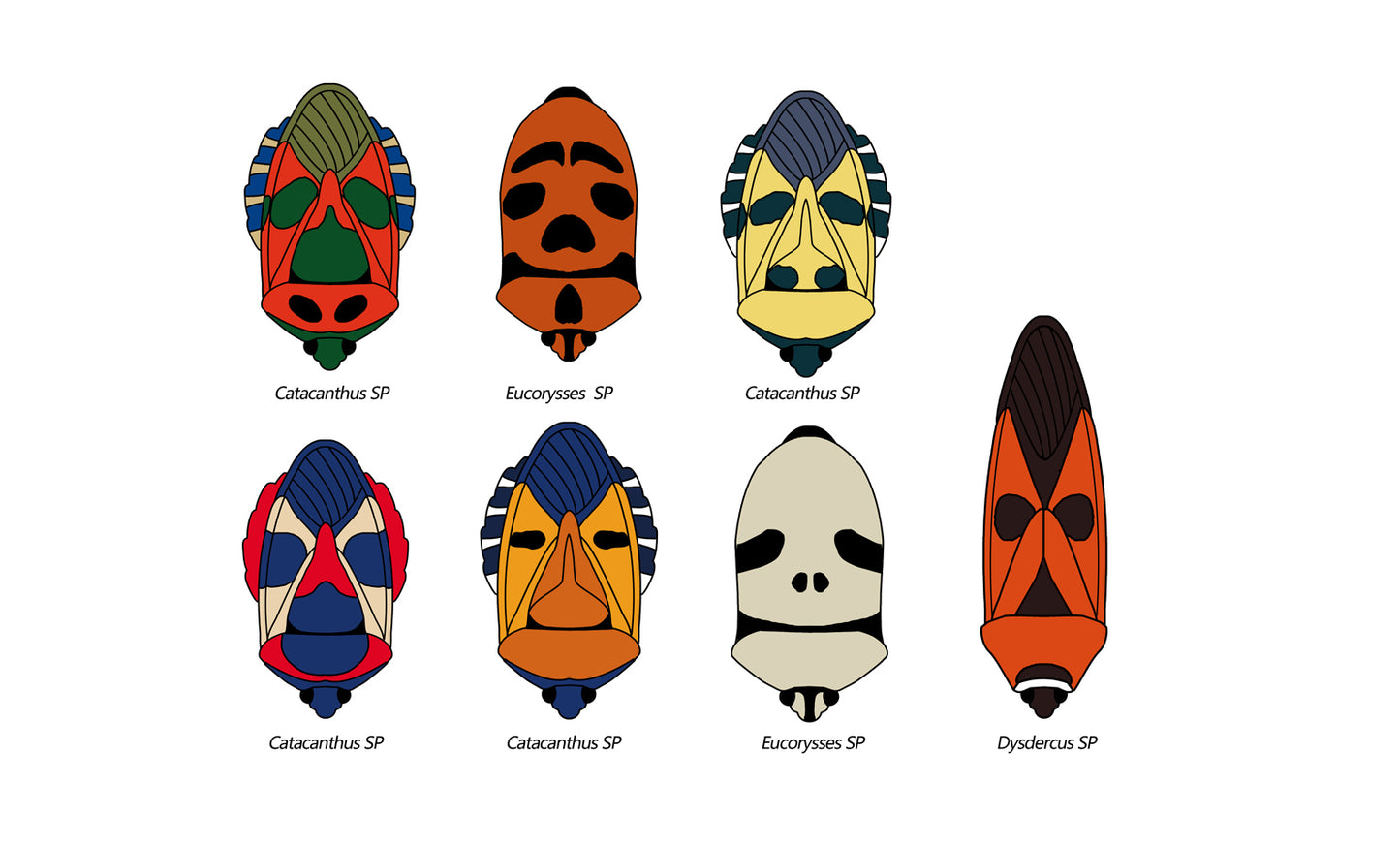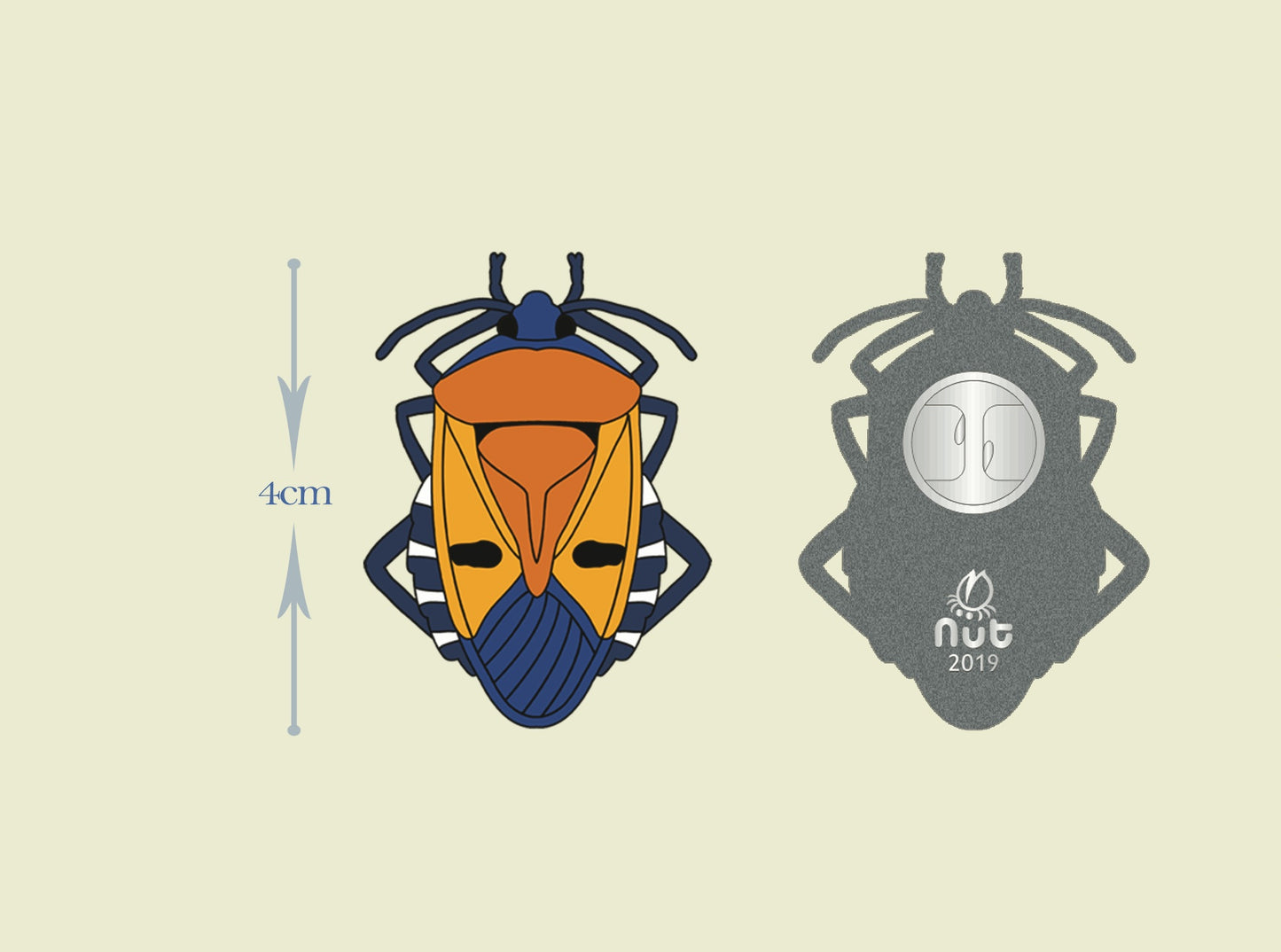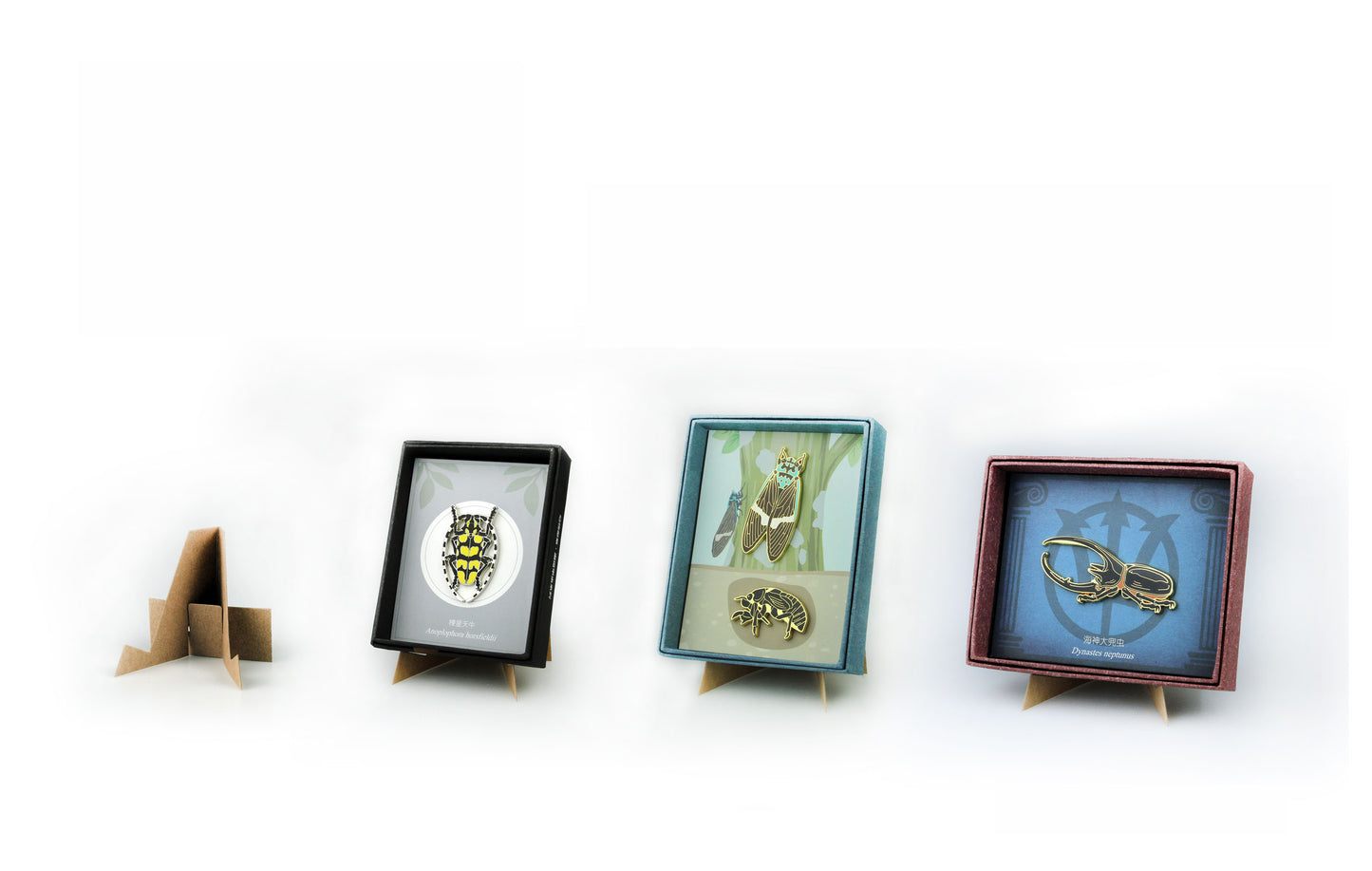Nut Insect Nature Design
Insect Badge Catacanthus incarnates “Face bug”
Insect Badge Catacanthus incarnates “Face bug”
Couldn't load pickup availability
In the magical nature, insects often cheat around with a "face" on their back. Catacanthus incarnates is the best of them - the back looks like a face mask: ruddy face, bright eyes, wide nose, and unique hairstyle.
Catacanthus incarnates belongs to the Insecta, Hemiptera and Pentatotidae, and its growth generally goes through three stages: egg, nymph and adult. There is no pupal stage, and it belongs to incomplete metamorphosis. They mainly live in tropical areas of Southeast Asia. The egg period of Catacanthus incarnates generally 6-12 days, and the whole nymph period is about 50-60 days. During the nymph period,Catacanthus incarnates will face five extremely painful molting processes. The nymph that breaks the egg for the first time will stay near the egg shell and maintain its life by the nutrients provided during the egg period until the first molting is completed; After the second molting, wing buds appeared in Catacanthus incarnates; After the fifth "rebirth of Nirvana",Catacanthus incarnates grew from a nymph less than 2mm to an adult with a body length of about 27mm, and the "face" pattern on the back was also fully exposed at this time.
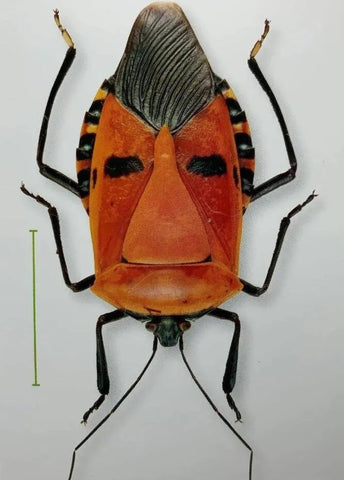
There are small shields on the abdomen and back of the adult, which are triangular in shape, with the base protruding and gradually narrowing towards the tail, forming the large nose of the "face". Its front wing is half leathery and half membranous. There are a pair of large black transverse spots on the leathery wing, which looks like a pair of bright eyes. In fact, this pair of large transverse spots in Catacanthus incarnates play the role of "eye spots" - using spots to fake the eyes of raptors to scare off predators, and the more like the eyes, the greater the protective effect. Its membranous part is tea-brown, with crisscross wing veins on the wing surface, located at the tail of Catacanthus incarnates, which perfectly matches the "face" shape of the red stinking bug with a "beautiful hair".
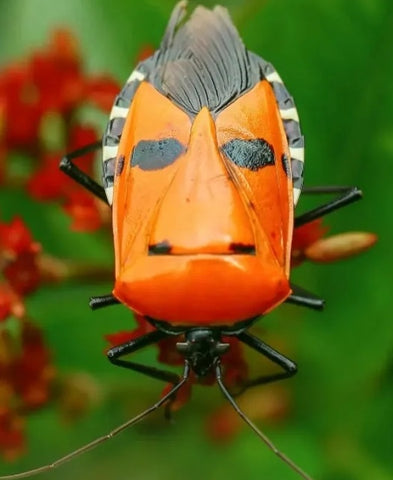
The color of Catacanthus incarnates is gorgeous, usually red, orange or yellow. On the one hand, the bright color can serve as a warning to the outside world; On the other hand, since Catacanthus incarnates is mainly distributed in tropical regions such as Southeast Asia and India, bright colors can protect itself from UV damage.
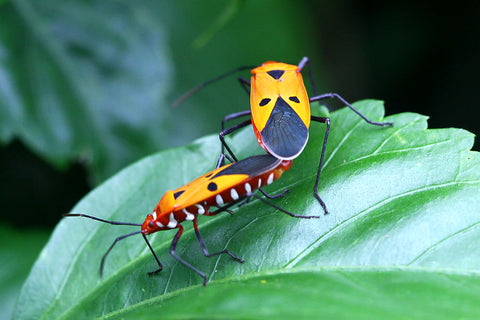
In terms of self-protection, Catacanthus incarnates has its own disadvantages, so it is "infamous": it has developed odor glands, which can secrete odor liquid and volatilize into odor after entering the air. Once they are frightened or feel threatened, they will immediately emit disgusting odor to defend themselves and take the opportunity to escape.
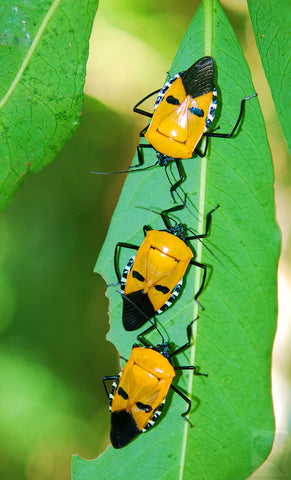
Although Catacanthus incarnates is loved by insect lovers because of its resemblance to human face, its harmfulness cannot be ignored. Catacanthus incarnates is a herbivorous insect, with a stinging mouthpiece, which is like a hollow needle for injection and extends from the front of the head. Catacanthus incarnates protects the mouthpiece under the abdomen during rest; When eating, insert the needle-like mouthpiece directly into the young branches, young stems, young leaves and fruits of plants for sucking, which often results in slow growth of plants, dead branches and leaves, and falling flowers and fruits. In 2013, in Karnataka, India, people found that nearly 300Catacanthus incarnates cashew trees were gathered on a cashew tree. They pierced the cashew nuts with probe-like mouthparts and sucked in the juice. The outflow of the juice made these fruit trees attacked by fruit flies and microorganisms, resulting in a large reduction in the yield of cashew nuts, causing huge economic losses to the local cashew industry.
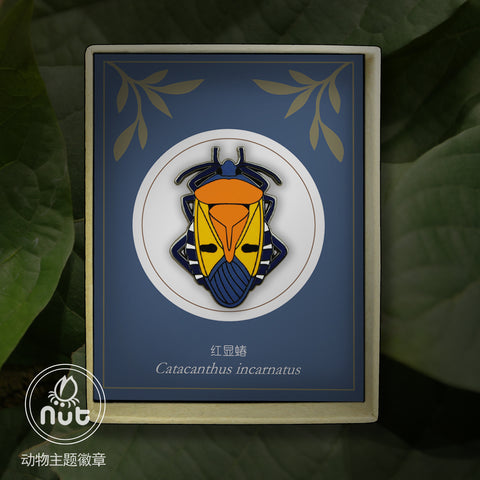
This series of badges is of great artistic collection value. The badges are made of zinc alloy gold-plated material, enamel technology, hand-grinded, hand-colored, and have a barbed butterfly hat on the back, which is convenient for you to wear. We also give you a box bracket, which you can enjoy better.
